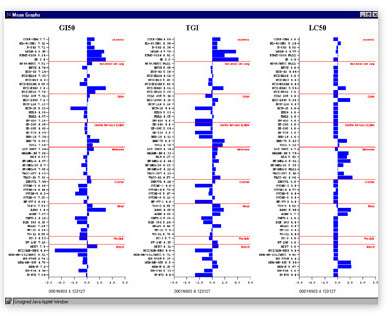DTP Branches and Offices
Research Paradigm (1955-1975)
Mouse L1210 leukemia model
The evolution of preclinical screening models used to select anticancer agents for clinical trials is due in part to improved understanding of the biology of disease and the physiological differences between animal and human models of disease, as well as to new techniques for analyzing preclinical and clinical correlations.
Early strategies for preclinical discovery and development of anticancer agents were largely based upon testing agents in mice bearing transplantable leukemias and solid tumors derived from murine and human sources. The first screening models used extensively at NCI were in vivo L1210 and P388 murine leukemias. Other transplantable tumor models were also used, including sarcoma 180, carcinoma 755, Walker 256 carcinosarcoma, B16 melanoma, and Lewis lung carcinoma.
From 1955 until 1975, the mouse L1210 screening found some success identifying agents to treat human leukemias and lymphomas. Twenty-one small molecules gained FDA approval as anticancer therapeutic agents during this time, 20 of which were discovered or developed with DTP assistance.
The L1210 model is a homogeneous, rapidly growing tumor with a predictable lifecycle, compared to most human tumors, which are heterogeneous and slow growing. Other physiological differences between mouse and human tumors made mice poor predictors for anticancer activity. Furthermore, although L1210 is predictive for those compounds that are effective against leukemias and lymphomas, the model is less effective at predicting activity in other human malignancies, which diminished the rate of success in the treatment of solid tumors.

DTP mean graph showing G150, TG1, and LL50 drug effect





